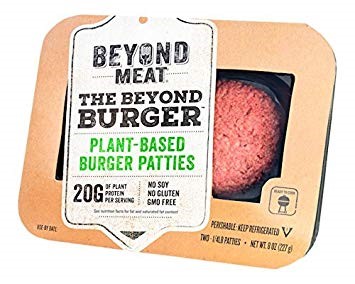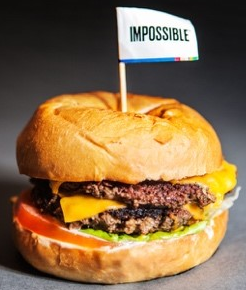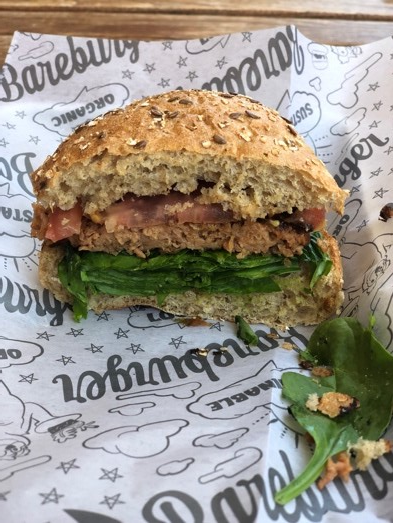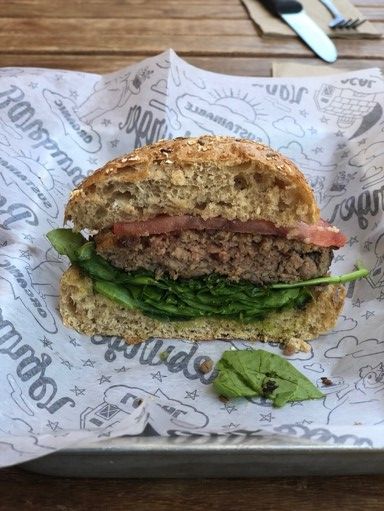| Follow us on Twitter
and view us on Instagram to receive nutrition & health tips as well as information about upcoming events!  
|
|
Nutrition Energy
In the News!
runnersworld.com
Lauren Antonucci, MS, RDN, CSSD, CDE, CDN
|
Join Our List
 |
| Become a fan! |
| 
|
|
|
|
Nutrition Energy Team for 6th Annual TeamCindy Run for Research
|
Nutrition Energy is excited to participate in the 6th Annual TeamCindy Run for Research 5K to benefit the Brain Aneurysm Foundation, which honors the life of Cynthia Lynn Sherwin.
Our Nutrition Energy Founder Lauren Antonucci knew Cindy well and is excited to join the race this year to honor her. For anyone who would like to join the NE team, please sign up HERE. Race details are below:
|
|
Happy Watermelon Month!
|
You might be surprised -yet happy, to hear there is a full month dedicated to these tasty, sweet, red fruits that we all associate with summer fun (or is that just us?). We think you will agree that BBQing on a hot Summer day while eating a nice cold slice of watermelon sounds pretty good right now! In addition to being extremely refreshing, watermelons have other great qualities, including some related both overall health and sports performance. As Dietitians we field questions about watermelon all the time. People want to know if they are really healthy...or "just all water + sugar". Read on and get excited to eat watermelon this summer.
Nutrition Facts:
A 2-cup serving of watermelon contains:
- 23 grams of energizing carbohydrates
- 2 grams of protein (yes protein!)
- 1 gram of fiber
- 10% daily value of vitamin A, 8% vitamin B6, 27% vitamin C, 7% potassium, and 7% of magnesium. Vitamin A found in watermelon is important for optimal eye health and boosts immunity by enhancing the infection-fighting actions of white blood cells, while Vitamin B helps the immune system produce antibodies which are needed to fight diseases. Lastly, the vitamin C in watermelon can help bolster the immune system's defenses against infections and viruses. (Ready to run out for some watermelon yet?)!
Lycopene
You may have heard of lycopene in reference to its presence in tomatoes and relation to improved health, well watermelon also contains lycopene. Ounce for ounce, watermelon has the most lycopene of any fruit or vegetable. Due to its antioxidant properties, Lycopene has been linked to reduced risk of
metabolic syndrome
, oxidative stress, many cancers, heart disease, diabetes and neurodegenerative diseases (are you running out to buy watermelon yet?!?!).
Fun Fact: Watermelons bright red color is because of its high lycopene content!
Electrolytes:
The hotter the temperature, and the more you sweat due to increased activity, the more electrolytes you lose. Guess what? Watermelons contain the key electrolytes; potassium and magnesium. This makes watermelon a great choice for a post workout snack (possibly with a pinch of salt on top if you worked out long or intensely in the heat), since sodium is the electrolyte lost most through sweat and not naturally occurring in watermelon (Yummy recipe below). Replacing these electrolytes is essential for fluid regulation.
*
Note: More information on electrolytes can be found in our Nutrition Energy June Newsletter
Hydration:
Staying hydrated on hot days is extremely important. In our experience, most people only think of fluid intake in terms of oz of water consumed, but water eaten in foods counts too! Did you know that about 92% of watermelon is water? "Eating your water" is just as good as drinking it. In the case of watermelon, it might even be better because of the added electrolytes.
Sports Performance:
Watermelon might also help increase sports performance. Watermelon is a source of L-citrulline. This amino acid has been associated with improvements in nitric oxide synthesis within the body. A study done by Diaz et al. found a positive association between watermelon juice and less muscle soreness 24 hours after an exhaustive exercise
[1]
. This means that watermelon might have the potential to make you feel less sore after a really hard training session or exercise.
Watermelon Buying Tips :
Ever wonder how you know if a watermelon is ripe or not? No fear, follow these steps next time you go to the super market!
- Inspect it. Look for a firm, symmetrical watermelon that is free from bruises, cuts or dents.
- Lift it. Watermelon should be heavy for size (remember, its full of water). Bonus arm strengthening workout if you lift it 10-20x ;)
- Turn it over. The underside of the watermelon should be yellow.
Watermelon Fun Facts:
- Even the rind is edible! Try it sliced in a stir-fry or pickled on a salad.
- Watermelon is great frozen. Dice into cubes and throw in the freezer as an alternative to ice cubes for lemonade or iced tea.
- Ever have trouble slicing a watermelon? We know we have. Watch this clip for guided support.
Watermelon Recipes:
Watermelon with Chile, Salt, & Lime
Serves: 5
INGREDIENTS: 
- 1 tablespoon kosher salt or other coarse salt
- 1-1/2 teaspoons ground chili pepper
- Zest and juice of 1 lime
- 1 (10-pound) watermelon, cut into wedges
- Lime wedges and mint leaves for garnish (optional)
INSTRUCTIONS:
- Combine the salt, chili pepper, and lime zest in a mortar and pestle. (If you don't have a mortar and pestle, you can finely chop the lime zest and use a fork to mix it with the salt and chili powder.)
- Arrange the watermelon wedges on a platter and drizzle with lime juice. Sprinkle the chili mixture on top. Garnish with lime wedges and mint leaves, if desired.
- Serve immediately or refrigerate until ready to serve.
Watermelon and Cucumber Gazpacho
Serves: 4
Courtesy of: www.epicurious.com
INGREDIENTS:

- 1 3-pound seedless watermelon, diced (about 5 cups), divided
- 1 small cucumber, peeled, seeded, diced (about 1 cup)
- 1 medium-size red bell pepper, seeded, diced (about 1 cup)
- 1 medium-size yellow bell pepper, seeded, diced (about 1 cup)
- 1 small jalapeño pepper, seeded, minced
- 3 pale green inner celery stalks, diced (about 1/2 cup)
- 1/2 small red onion, diced (about 1 cup)
- 1/4 cup finely chopped fresh mint
- 3 tablespoons fresh lime juice
- 2 tablespoons red wine vinegar
- 1/4 teaspoon salt
INTRUCTIONS:
- Puree 4 cups watermelon in blender until smooth.
- Transfer puree to large bowl.
- Add remaining 1 cup diced watermelon and next 10 ingredients; stir to combine.
- Cover gazpacho and refrigerate until cold, at least 1 hour and up to 4 hours
[1]
. Tarazona-Diaz MP, Alacid F, Carrasco M, Martinez I, Aguayo E. Watermelon juice: potential functional drink for sore muscle relief in athletes. J Agric Food Chem. 2013; 61(46):11241.
|
|
|
Impossible Burger? Beyond Burger?
What Exactly Are These and Should You Be Eating Them?
|
(Everything You Have Ever Wanted To Know About Plant Based Burgers?)
Have you heard of or been wondering about what the Impossible or Beyond Burgers are? These plant-based burgers are becoming more and more popular and popping up in supermarkets and restaurants everywhere. As BBQ season is here and since our summer burger cravings need to be fulfilled, we've decided to run through the in's and out's of these new plant based meat alternatives. In this article, we will discuss the pros and cons associated with making the switch to these alternatives instead of a "
classic" meat burger. We will give you the facts, then leave it up to you to decide what to grill at your next BBQ.
What's in the burgers?
- Beyond burgers are made from a combination of pea, rice, and mung bean protein, coconut oil, and beet juice extract (to mimic the red color of beef).
- Impossible burgers are made from soy and potato protein, a mix of B vitamins, and a compound called soy leghemoglobin (more on that later in the article).
- Lastly, although meat varies in fat percentages, a classic beef burger contains 85% lean and 15% ground beef fat.
Are these burgers healthy?
The biggest question we get about these burger alternatives is "are they healthy for me." Well, let's take a look! Per 4 ounce serving, the nutritional composition of the meat alternatives is comparable to a beef burger in most aspects including total calories, saturated fat, protein, and iron. What differs between these burgers is the fiber and salt content.
What's the deal with fiber in my burger?
The US Dietary Guidelines identify fiber as a nutrient of concern because most Americans do not consume the recommended 25-30 grams per day. As you see above, a beef burger (or any meat) does not contain fiber, while the Impossible and Beyond burgers have 3g and 2g respectively. If your diet is low in fiber, these plant-based alternatives may be a good addition to increase overall fiber intake. Of course, these burgers aren't the only way you're getting fiber in your diet as your pairing them with a delicious side of fruits and/or veggies right?!?!. In case you need a reminder, dietary fiber has numerous health benefits which may include the regulation of blood glucose, gastrointestinal health, and weight management.
What about saturated fat and salt?
The American Heart Association (AHA) recommends that no more than 13 grams of saturated fat and 2,300mg of sodium be consumed per day. If you thought eating these plant-based alternatives was a heart healthy switch from regular beef burgers, you might be surprised to see their high saturated fat content. For a quick comparison:

Beyond Burger has 6g of saturated fat and 390mg of sodium

Impossible Burger 8g of saturated fat and 370mg of sodium

85% lean 15% fat Beef Burger has 7g of saturated fat and 55mg of sodium (this is of course excluding any additional salt used for seasoning).
As you still might be wondering why the plant-based burgers are high in saturated fat, look at the ingredient list above and you'll see they both contain coconut oil (stay tuned as more on Coconut oil will be featured in next month's newsletter!).
What exactly is Soy Leghemoglobin (Found in the Impossible Burger)?
The Impossible Burger contains a compound you might not be familiar with called Soy leghemoglobin. Soy leghemoglobin is the hemoglobin found in soy beans. Leghemoglobin is a protein found in plants that carries heme, an iron-containing molecule. The heme in an Impossible Burger is identical to the heme in meat from animals. You might be wondering if this is safe to eat. The FDA (Food and Drug Administration) analyzed the compound and marked it as Generally Recognized as Safe (GRAS) for consumption. This compound adds to the iron content of Impossible burgers allowing it to have levels comparable to a classic beef burger.
So what's our professional opinion on the health of these new meat alternatives?
To simplify All of the points we mentioned above, on the topic of health, we too were initially surprised to see that the plant-based burgers are comparable to 85% beef burgers in saturated fat. In regards to sodium, although the plant-based burgers seem high in salt, most people season beef (or turkey or bison) burgers with added salt, therefore making them equal in that category-if not higher depending on how heavy your hand is with the salt when you make your burgers. Also, the meat we compared nutritionally above, is from 85% lean 15% fat beef. We all have the ability to choose leaner percentages (such as 90-95% lean) when buying meat to make burgers. This will easily further decrease the saturated fat content of your meal and is something you can't do with the plant-based burgers. Lastly, as the iron content is comparable in all burgers, if you are a vegetarian/vegan athlete and iron is a nutrient of concern, these alternatives might be a good addition to boost iron in your diet (top your plant-based burger with sautéed spinach and tomato for a vitamin C, iron absorbing boost).
What about Environmental concerns?
Often, when talking about plant-based products, the topic of environmental impact follows. A study conducted by the University of Michigan compared the environmental impact of The Beyond Burger to a ¼
lb. U.S. beef burger. Not shocking to us, this study concluded that The Beyond Burger uses significantly less water, less land, generates fewer Greenhouse Gas Emissions (GHGE), and requires less energy than a beef burger to produce. The Beyond Burger generates 90% less greenhouse gas emissions, requires 46% less energy, has greater than 99% less impact on water scarcity, and 93% less impact on land use than a ¼ pound of U.S. beef
[1]. This doesn't come as a surprise to us, and maybe not to your either, as we know the benefits eating more plant based meals have on the environment. If being more environmentally friendly is of concern to you, than these plant based alternatives might be a good choice for you
!
What about Moral/Ethical concerns?
If you are somebody who does not eat meat products due to moral or ethical reasons, these alternatives will obviously align with your preferences. Both plant-based patties are certified vegan and do not contain any animal products and/or ingredients.
Wrap-up!
In summary, when deciding if these plant-based alternatives fit your lifestyle and nutritional preferences, keep in mind the points highlighted in this newsletter. We leave it up to you to decide what fits best with your needs and preferences! Grill away!!
"Blind" Taste Test
**Nutrition Energy intern, Carmine Ingenito, did a blind taste test comparing the two burgers on different aspects at a local Bareburger restaurant. The waitress who brought the burgers was asked to please not tell Carmine which burger was the Beyond and which was the Impossible brand. Both burgers came with the same toppings and no cheese (so as not to mask the flavor comparison we were looking for). See which one was the winner below!!
Burger A

Red in color, similar to beef. It was chewy
in texture and slightly sweet.
Appearance: 3.5 (color red)
Taste: 3 (salty)
Texture: 3 (chewy)
--------------------------------------------------------------------------------
Burger B 
Thick and dark in color (similar to a more cooked burger). Texture was very similar to ground beef and crumbled well when bitten. Has an umami flavor but salty.
Appearance
: 5 (darker in color)
Taste: 4.5 (umami, meat like)
Texture: 4 (crumbles well, like ground meat)
--------------------------------------------------------------------------------
Winner:
Burger B: The Impossible Burger
Statement from waitress at Bareburger who happens to be vegan:
"People who are vegan are getting these burgers but we are also seeing more people who don't want to eat meat because of ethical reasons. In general, people tend to like the Impossible burger better."
*Impossible Burgers are not yet available in stores to purchase but are available in restaurants such as Bareburger
Note: Nutrition Energy has no affiliation with BareBurger.
[1]
Heller, Martin C. and Gregory A. Keoleian. (2018)
"Beyond Meat's Beyond Burger Life Cycle Assessment: A detailed comparison between a plant-based and an animal-based protein source." CSS Report, University of Michigan: Ann Arbor 1-38.
|
|
A Note from Lauren...
|
For those of you following my IG account
@nutritionenergy, you may have noticed many workout or food-related posts that include my family and friends. Moving and feeding my body is so ingrained in my life (and career!) and I love being able to share these moments with the people in my life. I am so grateful to have a husband, 3 kids, and many friends and family members who join me.
I love when my kids are excited to help me prepare snacks or meals - they're great bonding moments and we continue to learn so much together. My husband and I fell in love while on our many runs together and continue to encourage each other in our fitness goals. I have met many friends while attending yoga and martial arts classes. When you make fitness and food fun - your world expands and it no longer becomes 'work'.
Bored with your routine? Change it up! Make new friends at a workout class you've never tried. Prepare a picnic with the family and spend time in the local park playing Frisbee or Soccer. Grab a friend or two and hit the local Farmer's Market to compete against each other on who can make the best dish with the ingredients you find there. Too hot to run? Move your workout inside or make it a Dusk or Daybreak activity (evening or morning when it's cooler). Whatever it is or whomever you're with - have fun! Life is too short to not enjoy it.
What are some of your favorite summer activities? Are you with friends, family, or solo? Tag us in your social media updates or let us know on Twitter
@NutritionEnergy
,
Instagram
,
or
Facebook. We love seeing our clients and friends living their best life!
All of us at Nutrition Energy want to wish our Ironman Lake Placid Athletes the next of luck this Sunday.
Your training is complete!
You have practiced your pre-race meal and on-course nutrition and hydration.
Now it is time to execute your plan, race your race and enjoy the beautiful course and amazing accomplishment.
Go get em!
Lauren Antonucci, Director
Nutrition Energy
|
|
|